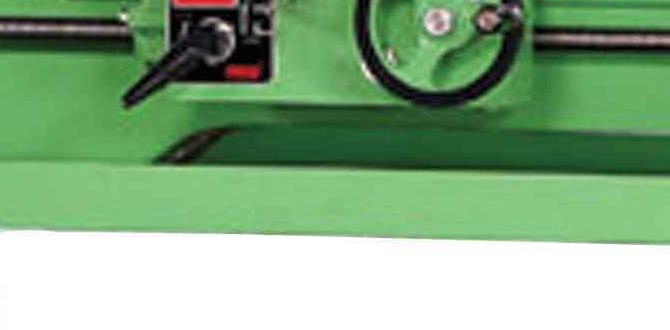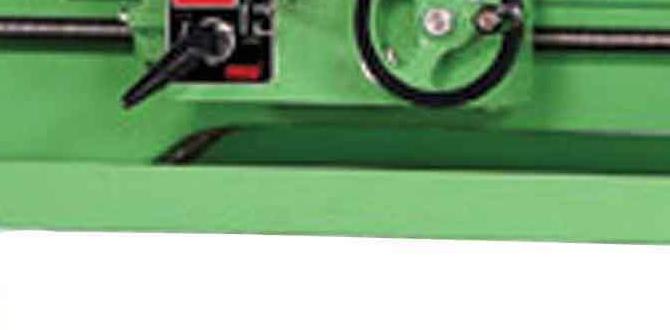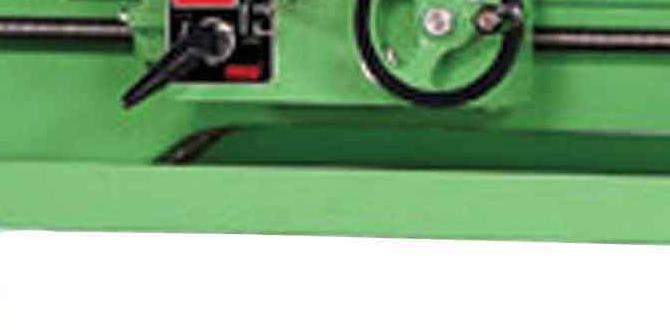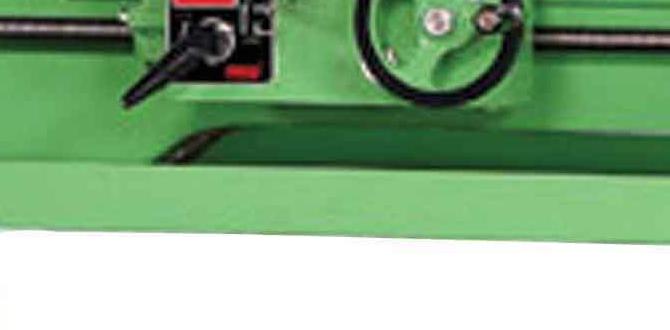Achieving a clean and safe woodworking environment doesn’t have to be a complicated chore. For those who own or are considering a wood lathe, a crucial component for maintaining air quality and protecting yourself from airborne particles is a wood lathe dust guard setup. Contrary to what some might believe, setting up this essential piece of equipment is often a straightforward and surprisingly easy process, requiring minimal tools and a bit of thoughtful placement. This article will guide you through the essentials of getting your wood lathe dust guard up and running efficiently, transforming your workspace from a dusty hazard into a more pleasant and healthier environment.
The primary function of a wood lathe dust guard is to capture the fine wood dust and chips generated during the turning process, preventing them from becoming airborne and settling on your machinery, around your workshop, and most importantly, in your lungs. While various designs exist, from integrated shop vac connection ports to standalone hoods, the core principle of their installation remains consistent: positioning them to effectively intercept the debris stream.
Understanding Your Wood Lathe Dust Guard Options
Before diving into the actual wood lathe dust guard setup, it’s beneficial to understand the different types available.
Integrated Dust Collection Ports: Many modern wood lathes come with built-in ports designed to connect directly to a shop vacuum or a dedicated dust collection system. These are often the most seamless solutions, as they are specifically engineered for the machine. Setup here mainly involves ensuring a secure connection with your vacuum hose and optimizing the guard’s position for maximum capture.
Aftermarket Dust Hoods and Enclosures: For lathes without integrated systems, a myriad of aftermarket dust hoods and partial enclosures are available. These can range from simple plastic or metal hoods that clamp onto the tool rest or lathe bed to more elaborate canvas or acrylic enclosures that surround a portion of the lathe.
DIY Solutions: For the resourceful woodworker, duct tape, plywood, and a bit of ingenuity can create surprisingly effective dust collection solutions. This often involves fabricating a custom hood and adapting it to your specific lathe model.
Regardless of the type you choose, the fundamental principles of wood lathe dust guard setup apply.
Steps for a Smooth Wood Lathe Dust Guard Setup
The process of wood lathe dust guard setup can be broken down into a few key stages.
1. Assess Your Lathe and Workspace:
Start by examining your wood lathe and the surrounding area. Where does the majority of dust and shavings originate from? Is there a natural funneling point? Consider the swing of your lathe and the types of projects you typically undertake. This initial assessment will help you determine the optimal placement and configuration of your dust guard.
2. Gather Necessary Tools and Materials:
Depending on your dust guard type, you might need:
Screwdrivers or wrenches (for attaching clamps or mounting brackets)
Measuring tape
A drill (if any modifications are needed for mounting)
Hose clamps (for securing vacuum hoses)
Your shop vacuum or dust collector
3. Initial Positioning and Securing:
The most critical aspect of wood lathe dust guard setup is its placement. The guard should be positioned as close as possible to the wood being turned without obstructing your view or interfering with your tools. Ideally, it should create a chute or a canopy that directs the dust and chips towards your dust collection source.
For Hoods: Many hoods attach to the tool rest or the lathe bed. Look for adjustable arms or mounting points that allow you to fine-tune the position. Ensure the clamp is snug but doesn’t damage your lathe’s bed ways.
For Enclosures: These might have a more fixed position, but you’ll still need to ensure the opening is correctly aligned with the turning spindle.
For Integrated Ports: Simply connect your vacuum hose securely to the designated port.
4. Connecting to Your Dust Collection:
This is where the “guard” becomes truly functional.
Shop Vacuum: Connect the hose from your dust guard (or the integrated port) to your shop vacuum. Ensure a tight seal with a hose clamp if necessary. Position your shop vacuum so the hose has some slack but isn’t excessively long, which can hinder airflow.
Dust Collector: If you have a dedicated dust collection system, follow the manufacturer’s instructions for connecting the appropriately sized hose.
5. Testing and Fine-Tuning:
Once everything is in place, it’s time for a test run.
Low Speed First: Begin by turning your lathe at a low speed and observe how the dust and chips are being handled. Are they being effectively captured? Is any dust escaping from specific areas?
Adjust as Needed: This is where the “easy setup” truly shines. Minor adjustments are often all that’s required. You might need to slightly tilt the hood, adjust its height, or reposition the vacuum hose. The goal is to create a continuous flow of air and debris directly into your collection system.
Full Speed Test: Once you’re satisfied with the capture at low speed, run a piece at your typical working speed and re-evaluate.
Maximizing the Effectiveness of Your Setup
Even with a well-executed wood lathe dust guard setup, a few extra tips can further enhance its performance:
Adequate Airflow is Key: Your dust collection system needs sufficient airflow (CFM – Cubic Feet per Minute) to effectively pull in the dust. Ensure your shop vacuum or dust collector is powerful enough for the task.
Regular Maintenance: Empty your shop vacuum or dust collector bin regularly. A full bin drastically reduces suction power. Periodically check your dust guard for any blockages or damage.
Consider Ventilation: While a dust guard captures a significant amount of dust, it’s not a perfect solution for complete air purification. Good general workshop ventilation, such as an air cleaner or an open window (weather permitting), is still highly recommended.
Appropriate PPE: Always wear a high-quality dust mask or respirator, even with a dust guard. No system is 100% effective at capturing every single ultrafine particle.
* Hose Diameter: The diameter of your vacuum hose can impact airflow. Ensure it’s appropriate for both your dust guard and your collection system.
conclusion
the task of implementing a wood lathe dust guard setup is far from being an insurmountable hurdle. By understanding the basic principles of dust collection, choosing the right guard for your needs, and following these simple setup steps, you can significantly improve the air quality in your woodworking space. The ease with which most dust guards can be installed and adjusted means that this vital piece of safety equipment is accessible to woodturners of all skill levels, offering a tangible benefit that contributes to a healthier, cleaner, and more enjoyable turning experience. Prioritizing this simple setup is a wise investment in your long-term well-being and the longevity of your woodworking tools.






